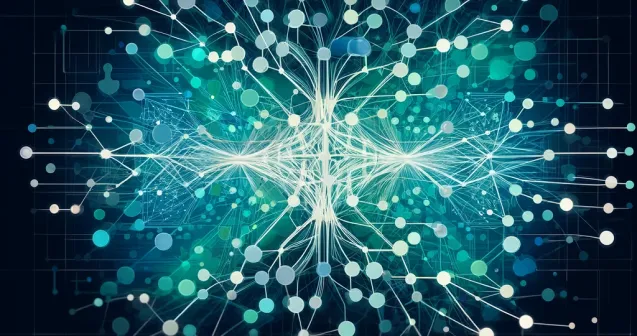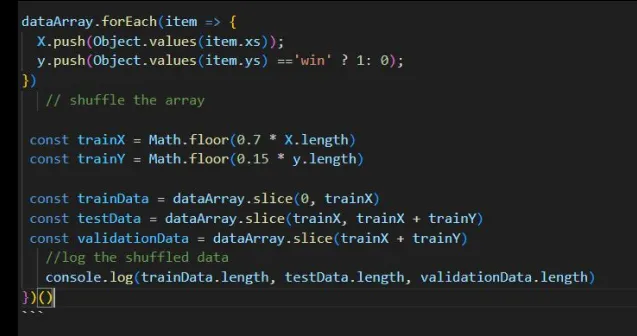
Using TensorFlow.js for Time Series Analysis
Learn how to use TensorFlow.js for time series analysis, including data preprocessing, model architecture design, training, and forecasting. Explore advanced techniques for sequential data.
· tutorials · 2 minutes
Using TensorFlow.js for Time Series Analysis
Time series data involves sequential observations indexed in time order, such as stock prices, weather data, or sales trends. TensorFlow.js provides robust tools for handling time series tasks like forecasting, anomaly detection, and pattern recognition.
Key Steps in Time Series Analysis with TensorFlow.js
-
Data Preprocessing: Transform raw time series data into a format suitable for machine learning models.
-
Model Selection: Use architectures like RNNs, LSTMs, or GRUs for capturing temporal dependencies.
-
Training and Evaluation: Train models on historical data and evaluate their performance.
-
Prediction and Forecasting: Use trained models to predict future values.
Step 1: Preprocessing the Data
Time series data needs to be structured into sequences for input into models.
import * as tf from '@tensorflow/tfjs';
// Example time series data (e.g., daily temperatures)const rawData = [30, 32, 34, 33, 35, 37, 40, 38, 36, 35];
// Create sequences and labelsconst windowSize = 3; // Number of previous steps used for predictionconst sequences = [];const labels = [];
for (let i = 0; i < rawData.length - windowSize; i++) { sequences.push(rawData.slice(i, i + windowSize)); // Input sequence labels.push(rawData[i + windowSize]); // Target value}
// Convert to tensorsconst xs = tf.tensor2d(sequences); // Shape: [numSamples, windowSize]const ys = tf.tensor1d(labels); // Shape: [numSamples]Step 2: Designing the Model
Recurrent neural networks (RNNs) or LSTMs are well-suited for time series due to their ability to capture sequential dependencies.
const model = tf.sequential();
// Add an LSTM layermodel.add(tf.layers.lstm({ units: 50, // Number of LSTM units inputShape: [windowSize, 1], // Sequence length and number of features returnSequences: false, // Output only the final time step}));
// Add a dense layer for regression outputmodel.add(tf.layers.dense({ units: 1 })); // Predict a single value
// Compile the modelmodel.compile({ optimizer: tf.train.adam(), loss: 'meanSquaredError',});
// Display model summarymodel.summary();Step 3: Training the Model
Train the model on the time series data.
(async () => { const reshapedXs = xs.reshape([xs.shape[0], windowSize, 1]); // Reshape for LSTM input await model.fit(reshapedXs, ys, { epochs: 50, batchSize: 16, validationSplit: 0.2, // Use 20% of data for validation callbacks: { onEpochEnd: (epoch, logs) => { console.log(`Epoch ${epoch + 1}: Loss = ${logs.loss}`); }, }, });})();Step 4: Making Predictions
Use the trained model to forecast future values.
const testSequence = tf.tensor2d([[37, 40, 38]]).reshape([1, windowSize, 1]); // Example inputconst prediction = model.predict(testSequence);prediction.print(); // Predicted valueAdvanced Techniques for Time Series Analysis
-
Sliding Window Method: Generate overlapping windows of data to increase the training dataset’s size.
-
Feature Engineering: Add additional features like day-of-week, holiday flags, or moving averages.
-
Attention Mechanisms: Use attention layers to focus on the most relevant parts of the sequence.
-
Multi-Step Forecasting: Predict multiple future values simultaneously by adjusting the model’s output layer.
More posts
-

Saving and Restoring Models in TensorFlow.js
Learn how to save and restore TensorFlow.js models with this easy-to-follow tutorial. Perfect for beginners who want to understand how to manage machine learning models.
-

Why Split a Dataset into Training, Validation, and Test Sets?
Learn the purpose of dividing datasets into training, validation, and test sets, and see practical examples of how to implement this in TensorFlow.js for better machine learning models.
-

Understanding Dropout Regularization in TensorFlow.js
Learn about dropout regularization in TensorFlow.js and how it prevents overfitting during model training. Explore its implementation and impact on deep learning models.